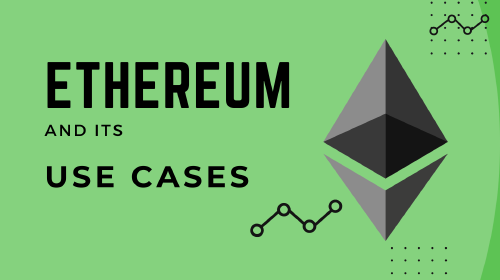What is FileCoin and How Does it Work?
Salomon Kisters
Feb 13, 2023This post may contain affiliate links. If you use these links to buy something we may earn a commission. Thanks!
Filecoin is a decentralized storage network that allows individuals and organizations to rent out their unused storage space in exchange for the Filecoin cryptocurrency.
The network is built on top of the InterPlanetary File System (IPFS) protocol, which allows for the storage and retrieval of files using a unique cryptographic hash rather than a traditional file path or address.
Users can store files on the Filecoin network by creating a storage contract with a miner, who is responsible for maintaining and verifying the files on the network. Miners are incentivized to provide storage and retrieval services by earning Filecoin for each successful transaction.
Filecoin also utilizes a proof-of-replication and proof-of-space-time consensus mechanism, which allows miners to prove that they are storing the data they claim to be stored through a process called “provable data possession”.
This ensures that the data on the network is secure and can be recovered even if a miner goes offline.
Let’s take a closer look at what Filecoin has done, and then take a look at the cryptocurrency itself.
The InterPlanetary File System Protocol
The InterPlanetary File System (IPFS) protocol was designed by Juan Benet and his team at Protocol Labs. It is a peer-to-peer protocol that is designed to make the web faster, safer, and more open by allowing for the storage and retrieval of files using a unique cryptographic hash rather than a traditional file path or address.
IPFS works by breaking files into smaller chunks and then creating a hash of each chunk, which is used as the address for that chunk on the network. These chunks are then distributed across the network, with each peer responsible for storing and sharing a certain subset of the chunks. When a user wants to retrieve a file, they simply provide the hash of the file to the network, and the network will return all of the chunks that make up that file.
IPFS is used by several blockchain projects, including Filecoin, Ethereum, and EOS. IPFS can be used as a decentralized storage layer for these blockchains, making them more efficient and resilient.
Proof of Replication
Proof of Replication is a protocol that is used to ensure data durability in decentralized storage systems. The protocol is designed to ensure that data is stored redundantly across multiple nodes and that the data can be easily retrieved if any of the nodes fail.
It was first proposed in a paper by Bram Cohen, the creator of the BitTorrent protocol. The protocol is different from proof-of-stake in that it focuses on ensuring data durability, rather than on determining the next block in a blockchain.
Proof of Replication is different from Proof of Stake in that, PoS is a consensus mechanism used to validate transactions and add new blocks to a blockchain, and it is based on the idea of validators putting up a stake (i.e., holding a certain amount of cryptocurrency) to increase their chances of being selected to validate a new block.
While PoR focuses on data storage and proof that data is being stored correctly and redundantly.
Proof-of-Space-Time Protocol
Proof of Space-Time (PoST) is a protocol that uses computational resources, specifically disk space, to provide proof of data storage.
It is a variation of the proof of storage protocol, and it requires a storage provider to prove that they have stored a certain amount of data for a certain period. This is done by providing a cryptographic proof of space-time, also known as a “challenge”.
Proof of Space-Time protocol was first proposed in a paper by D.J. Bernstein, and their team in 2017, which is focused on using the amount of disk space a node has dedicated to storage as a measure of its “stake” in the network. The more disk space a node has committed to storage, the more likely it is to be selected to store a particular file or piece of data.
PoST protocol is considered to be more efficient than traditional proof of storage protocols, as it allows for the use of less computational resources and lower storage costs, while still ensuring data durability.
What is the FileCoin Marketplace?
The Filecoin marketplace is a platform where users can buy and sell storage space using FIL. Users who want to store data on the network can purchase storage space from storage providers (miners) in the marketplace. Miners, in turn, use their spare storage capacity to store the data and earn FIL as a reward.
The marketplace uses a bidding system, where users can specify the amount of storage they need and the duration for which they need it, and storage providers can bid for the storage contract by offering a price in FIL.
The Filecoin marketplace also allows for data retrieval, meaning that users can retrieve their stored data from any miner that has a replica of their data.
FileCoin ICO and ITO
The Filecoin Initial Coin Offering (ICO) was held in 2017. The ICO was divided into two parts, the first being a pre-sale, which was held in the form of an Initial Token Offering (ITO) and was only available to accredited investors. The second part was a public sale, which was open to all investors.
During the ITO, a total of 35% of the total token supply (200 million FIL) was sold to accredited investors at $0.75 per token. The public sale was held using a Dutch auction format, where the price per token started at $1.00 and gradually decreased over a period. The public sale raised a total of $205 million, and the total token supply sold during the ICO was 60%.
The Filecoin ICO was considered to be one of the most successful ICOs of 2017, with the project raising a total of $257 million in funding. The project was able to gather support from notable investors and venture capital firms such as Andreessen Horowitz, Union Square Ventures, and Winklevoss Capital.
Competitors of FileCoin
Some direct competitors of Filecoin in the decentralized storage market include:
Sia
Sia is a decentralized cloud storage platform that uses blockchain technology to create a peer-to-peer network for renting out storage space. Sia uses smart contracts to enforce storage contracts and payments and uses redundant file storage to ensure data durability.
Storj
Storj uses sharding to divide files into smaller pieces, encrypts each piece, and distributes them across the network. Storj also uses blockchain technology to track file ownership and payments.
MaidSafe
MaidSafe uses a novel data structure called a “safe network” to provide secure, private, and anonymous data storage and communication.
These projects also use blockchain technology to create a decentralized market for storage space. Additionally, other decentralized cloud storage projects like Swarm could also be considered as competition to Filecoin.
Final thoughts
Filecoin fixes a lot of issues related to data storage. It creates a free market for data storage options, making it a lot more cost-effective than other storage solutions out there. Using millions of computers around the world, Filecoin can create a storage hive bigger than one can imagine. It is economical, too, to use existing resources, instead of setting up huge server farms like google or amazon.
However, you will be storing your files on some stranger’s computer. What will stop them from just hacking into your data? The answer is simple. The data is broken into tiny pieces and stored throughout the web of nodes, so each computer will have only a tiny piece of your data. Only the blockchain itself can piece it back together for you once you request it.
Although Filecoin fixes a lot of problems, there are issues with speed and technology. Since data is scattered all over the web of servers, it takes a longer time to piece it back together. Apart from that, there is a very clear barrier to entry; you need to purchase FileCoin to use the service, which can be a hindrance for people who are not very tech-savvy.
We hope this information improves your knowledge of Filecoin. Let us know if we missed anything!
Stay informed with the latest insights in Crypto, Blockchain, and Cyber-Security! Subscribe to our newsletter now to receive exclusive updates, expert analyses, and current developments directly to your inbox. Don't miss the opportunity to expand your knowledge and stay up-to-date.
Love what you're reading? Subscribe for top stories in Crypto, Blockchain, and Cyber-Security. Stay informed with exclusive updates.
Please note that the Content may have been generated with the Help of AI. The editorial content of OriginStamp AG does not constitute a recommendation for investment or purchase advice. In principle, an investment can also lead to a total loss. Therefore, please seek advice before making an investment decision.

Ethereum: Decentralized Blockchain Platform & Use Cases
Learn about Ethereum, a decentralized blockchain platform with smart contract functionality. Explore its use cases, how to buy Ether, and the benefits of OriginStamp.

Polkadot: Decentralized Web Protocol and Advanced Features Explained
Learn about Polkadot, a decentralized web protocol and blockchain with advanced features designed by Gavin Wood. Explore how Polkadot works and its unique advantages.

What Is Tron? A Guide to the Decentralized Blockchain Platform
Tron is a decentralized blockchain platform designed to promote content and entertainment. It uses a delegated Proof-of-Stake consensus and has grown in popularity since its launch in 2018.
Protect your documents
Your gateway to unforgeable data. Imprint the authenticity of your information with our blockchain timestamp